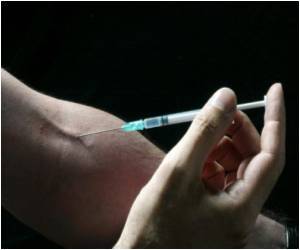Boston University researchers have developed a unique material and drug delivery mechanism that could pave the way for implants that release a drug at a designated rate for months.

The system consists of a biocompatible, highly porous, three-dimensional polymer material containing a selected drug and a volume of air that slows infiltration from surrounding water. As water seeps into the material, it displaces the air, gradually releasing the drug.
"The idea was to create a 3D material that has polymer fibers throughout and air trapped within," said Grinstaff, who developed the material in conjunction with BU biomedical engineering PhD student Stefan Yohe and Dr. Yolanda Colson, a Brigham and Women's Hospital thoracic surgeon and lung cancer specialist. "If we can slow the penetration of water into the structure, it will slow the release of the drug."
To prevent water from flooding the structure and causing an immediate release of the drug, Grinstaff and his colleagues designed the air-filled, mesh-like material to be "superhydrophobic"—so water-resistant that droplets of water barely touch the surface, forming beads similar to those that appear on a freshly waxed car. They produced the porous polymer mesh using a process called electrospinning, which overlays micron-sized fibers upon one another.
To control the rate of drug release, they adjusted chemical and physical properties of the material so that the entrapped air is loosely or tightly held. The more tightly held the air is within the structure, the harder it is for water to displace it, the slower the release, and the longer the treatment duration.
Loaded with a widely used anti-cancer drug called SN-38 in in vitro experiments, the polymer mesh and internal air pocket proved to be robust and effective against lung cancer cells in solution for more than 60 days, indicating its suitability for long-term drug delivery. Grinstaff and his collaborators next plan to conduct a series of in vivo experiments to evaluate the system's efficiency and potential clinical effectiveness—a critical preliminary step before initiating clinical trials.
Advertisement
"Many researchers are advancing new drug delivery systems, and several others are designing superhydrophobic materials, but we're combining these disciplines to see if we can open up new doors and enable more effective treatments for a wide range of diseases," said Grinstaff.
Advertisement
Source-Eurekalert















